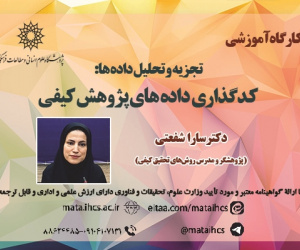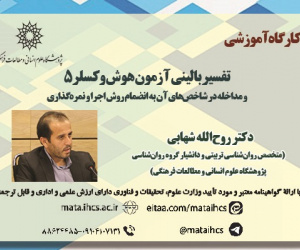بررسی اثر سواد هوش مصنوعی دانشجویان بر مهارت امنیتی دستگاه های هوشمند (مقاله علمی وزارت علوم)
درجه علمی: نشریه علمی (وزارت علوم)
آرشیو
چکیده
هدف پژوهش حاضر بررسی تاثیر سواد هوش مصنوعی دانشجویان بر مهارت امنیتی دستگاه های هوشمند بود. این پژوهش کاربردی با رویکرد کمی و به روش پیمایشی انجام شد. جامعه آماری پژوهش 1307 دانشجوی کارشناسی و کارشناسی ارشد دانشکده علوم تربیتی و روان شناسی (دانشگاه شهید مدنی آذربایجان) بود. نمونه مورد مطالعه 194 نفر و از روش نمونه گیری تصادفی استفاده شد. ابزار گردآوری داده، پرسش نامه بود که به صورت چاپی و حضوری در اردیبهشت و خرداد 1403 بین دانشجویان توزیع شد. تحلیل عاملی تاییدی برای روایی و پایایی پرسش نامه با استفاده از نرم افزار Smart PLS انجام شد. از نرم افزار SPSS برای تجزیه و تحلیل داده ها استفاده شد. میانگین سواد هوش مصنوعی 63/4 و مهارت امنیتی دستگاه ها 24/4 بود. تفاوتی آماری معنی داری در وضعیت سواد هوش مصنوعی دانشجویان بر حسب متغیرهای جمعیت شناختی (جنسیت، مقطع، رشته تحصیلی و معدل) مشاهده نشد. بر اساس آزمون تی مستقل در سطح 03/0 تفاوت معنی داری در میانگین مهارت امنیتی دستگاه ها بر حسب جنسیت و مقطع تحصیلی دانشجویان مشاهده شد. نتایج آزمون آنوا تفاوت آماری معنی دار در سطح 049/0 در میانگین مهارت امنیتی دستگاه ها بر حسب رشته تحصیلی دانشجویان نشان داد. بر اساس آزمون همبستگی پیرسون بیشترین همبستگی بین کاربرد و ارزیابی و کمترین بین کاربرد و اخلاق سواد هوش مصنوعی بود؛ به علاوه رابطه مثبت و معناداری بین سواد هوش مصنوعی با مهارت امنیتی دستگاه ها وجود داشت. نتایج آزمون رگرسیون نشان داد که ابعاد ارزیابی و کاربرد با ضریب بتا (356/0) و (279/0) قدرت پیش بینی کننده مثبت داشتند و 2/36 درصد از تغییرات متغیر وابسته را تبیین کرده اند.Investigating the effect of university students' artificial intelligence literacy on smart device security skills
The purpose of the present research was to study the effect of Artificial Intelligence Literacy (AIL) of students on students' skills in smart device security. This applied research was conducted with a quantitative approach and a survey method. The statistical population of the study was 1307 undergraduate and graduate students at the Faculty of Education and Psychology. The sample size was 194 cases and a random sampling method was applied. The data collection tool was a questionnaire that was distributed among the students in person in printed format from the first of May to the end of June 2024. Confirmatory factor analysis was conducted using Smart PLS for validity and reliability of the questionnaire. SPSS software was used to analyse data. The average of AIL was 4.63 and the device's security skill was 4.24. No difference was observed in the status of students based on demographics. Based on the independent t-test, a significant difference was observed at the 0.03 level in the device's security skill based on the gender and field of study of the students. The results of the ANOVA test showed a statistically significant difference at the 0.049 level in the device's security skill based on the field of study of the students. Based on the Pearson test, the highest correlation was between usage and evaluation and the lowest between usage and ethics of AIL; also, there was a positive and significant relationship between AIL and device security skill. The results of the regression test showed that the evaluation and usage dimensions had positive predictive power with beta coefficients of (0.356) and (0.279), and explained 36.2 percent of the changes in the dependent variable.







